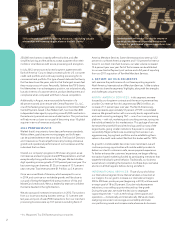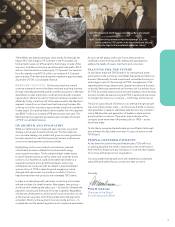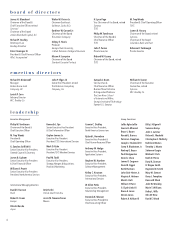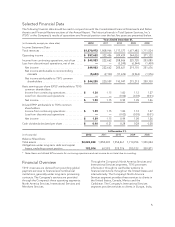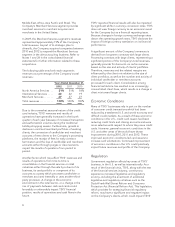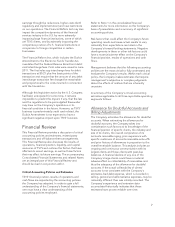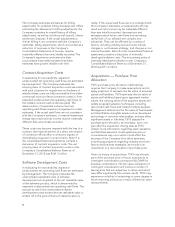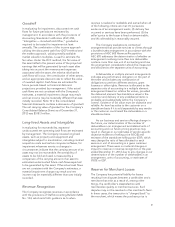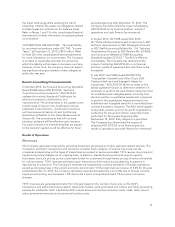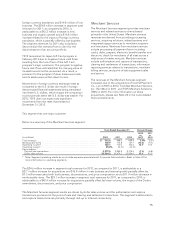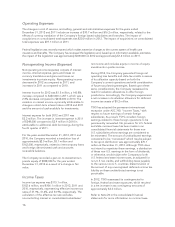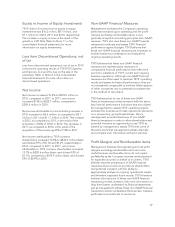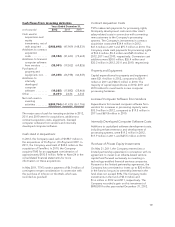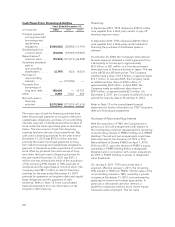NetSpend 2012 Annual Report Download - page 14
Download and view the complete annual report
Please find page 14 of the 2012 NetSpend annual report below. You can navigate through the pages in the report by either clicking on the pages listed below, or by using the keyword search tool below to find specific information within the annual report.the latest technology while avoiding the risk of
ownership. Neither the assets nor obligations related
to these leases are included on the balance sheet.
Refer to Notes 1 and 19 in the consolidated financial
statements for further information on operating lease
commitments.
CONTRACTUAL OBLIGATIONS: The total liability
for uncertain tax positions under ASC 740, “Income
Taxes,” at December 31, 2012 is $9.0 million. Refer
to Note 20 in the consolidated financial statements
for more information on income taxes. The Company
is not able to reasonably estimate the amount by
which the liability will increase or decrease over time;
however, at this time, the Company does not expect
any significant changes related to these obligations
within the next year.
Recent Accounting Pronouncements
In October 2012, the Financial Accounting Standards
Board (FASB) issued ASU 2012-04,“Technical
Corrections and Improvements.” ASU 2012-04
updates Accounting Standards Codification for
technical corrections, clarifications, and
improvements. The amendments in this update cover
a wide range of topics in the Codification and are
presented in two sections —Technical Corrections
and Improvements (Section A) and Conforming
Amendments Related to Fair Value Measurements
(Section B). The amendments that will not have
transition guidance will be effective upon issuance.
For public entities, the amendments that are subject
to the transition guidance will be effective for fiscal
periods beginning after December 15, 2012. The
Company has determined the impact of adopting
ASU 2012-04 on its financial position, results of
operations and cash flows to be immaterial.
In August 2012, the FASB issued ASU 2012-
03,“Technical Amendments and Corrections to SEC
Sections: Amendments to SEC Paragraphs Pursuant
to SEC Staff Accounting Bulletin No. 114, Technical
Amendments Pursuant to SEC Release No. 33-9250,
and Corrections Related to FASB Accounting
Standards Update 2010-22.” The ASU is effective
immediately. The Company has determined the
impact of adopting ASU 2012-03 on its financial
position, results of operations and cash flows to be
immaterial.
In July 2012, the FASB issued ASU 2012-02,
“Intangibles—Goodwill and Other (Topic 350):
Testing Indefinite-Lived Intangible Assets for
Impairment.” ASU 2012-02 allows an entity to first
assess qualitative factors to determine whether it is
necessary to perform the quantitative impairment test
for indefinite-lived intangible assets. An entity that
elects to perform a qualitative assessment is required
to perform the quantitative impairment test for an
indefinite-lived intangible asset if it is more likely than
not that the asset is impaired. The ASU, which applies
to all public, private, and not-for-profit organizations,
is effective for annual and interim impairment tests
performed for fiscal years beginning after
September 15, 2012. Early adoption is permitted.
The Company has determined the impact of
adopting ASU 2012-02 on its financial position,
results of operations and cash flows to be immaterial.
Results of Operations
Revenues
The Company generates revenues by providing transaction processing and other payment-related services. The
Company’s pricing for transactions and services is complex. Each category of revenue has numerous fee
components depending on the types of transactions processed or services provided. TSYS reviews its pricing and
implements pricing changes on an ongoing basis. In addition, standard pricing varies among its regional
businesses, and such pricing can be customized further for customers through tiered pricing of various thresholds
for volume activity. TSYS’ revenues are based upon transactional information accumulated by its systems or
reported by its customers. The Company’s revenues are impacted by currency translation of foreign operations,
as well as doing business in the current economic environment. Of the total revenue increase of 3.4% for the year
ended December 31, 2012, the Company estimates revenues decreased by a net 2.2% due to foreign currency
exposure and pricing, and increased 1.5% due to the impact of acquisitions and 4.1% as a result of volume
changes.
TSYS’ revenues are generated primarily from charges based on the number of accounts on file (AOF),
transactions and authorizations processed, statements mailed, cards embossed and mailed, and other processing
services for cardholder AOF. Cardholder AOF include active and inactive consumer credit, retail, debit, stored
value, government services and commercial card accounts.
11



